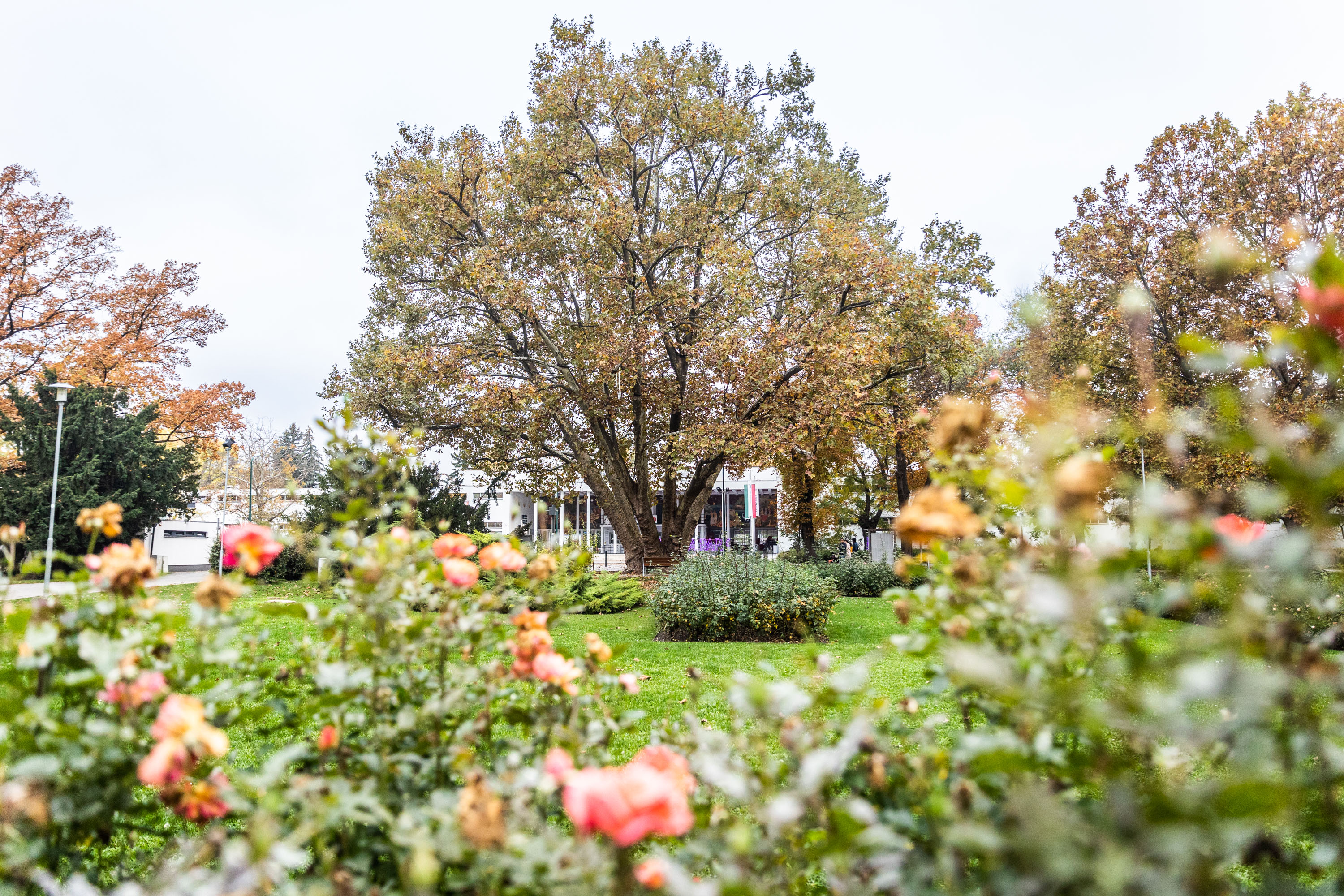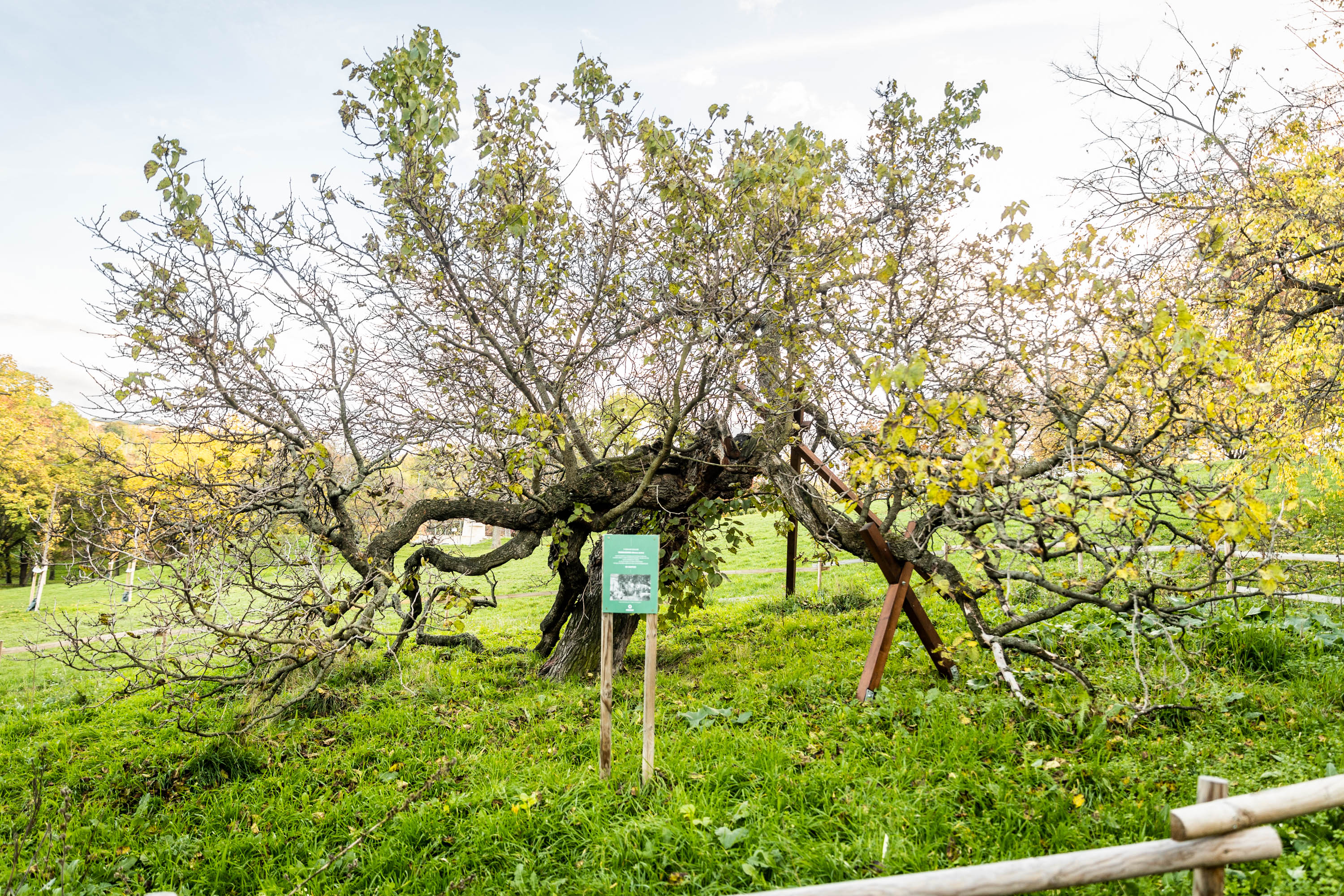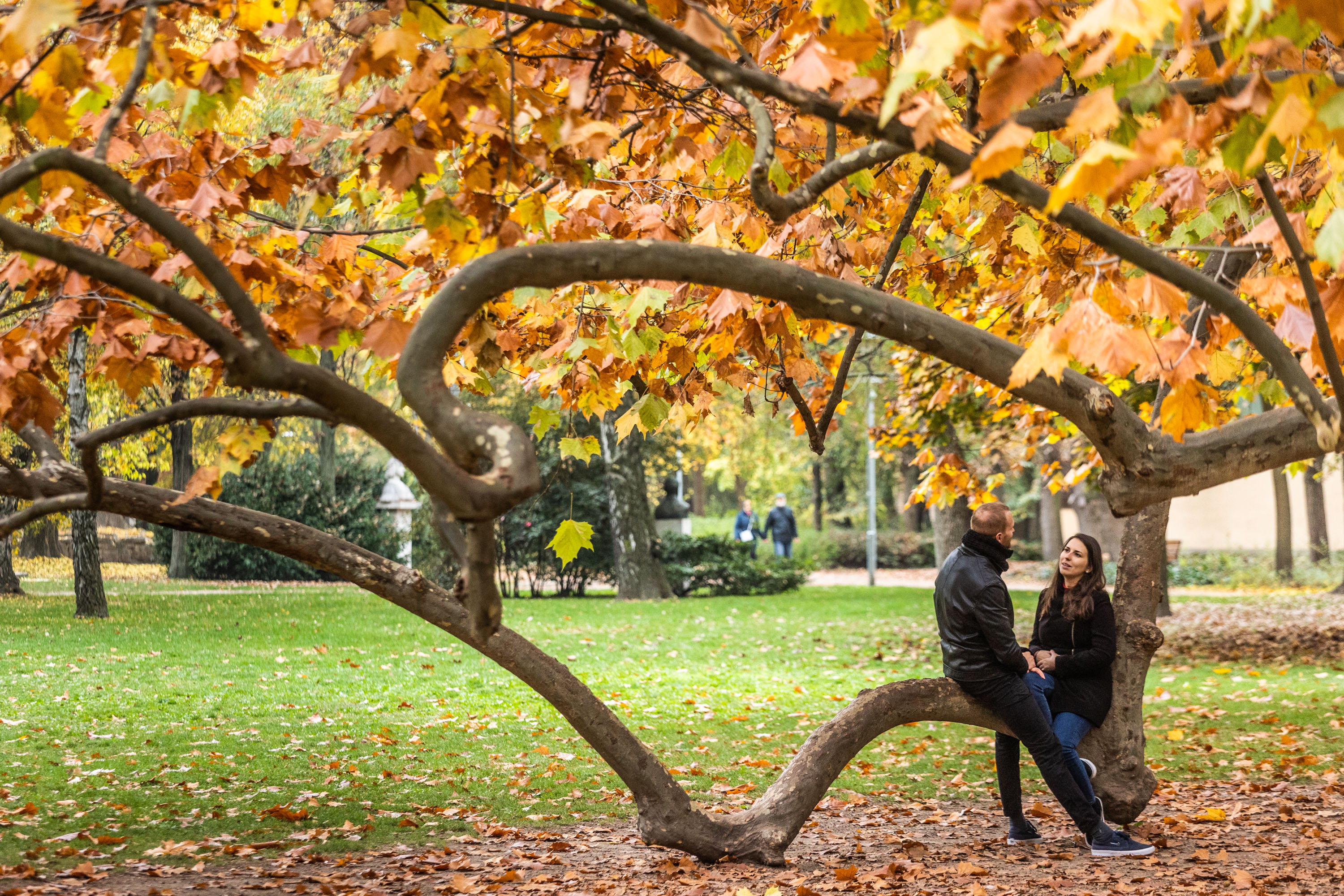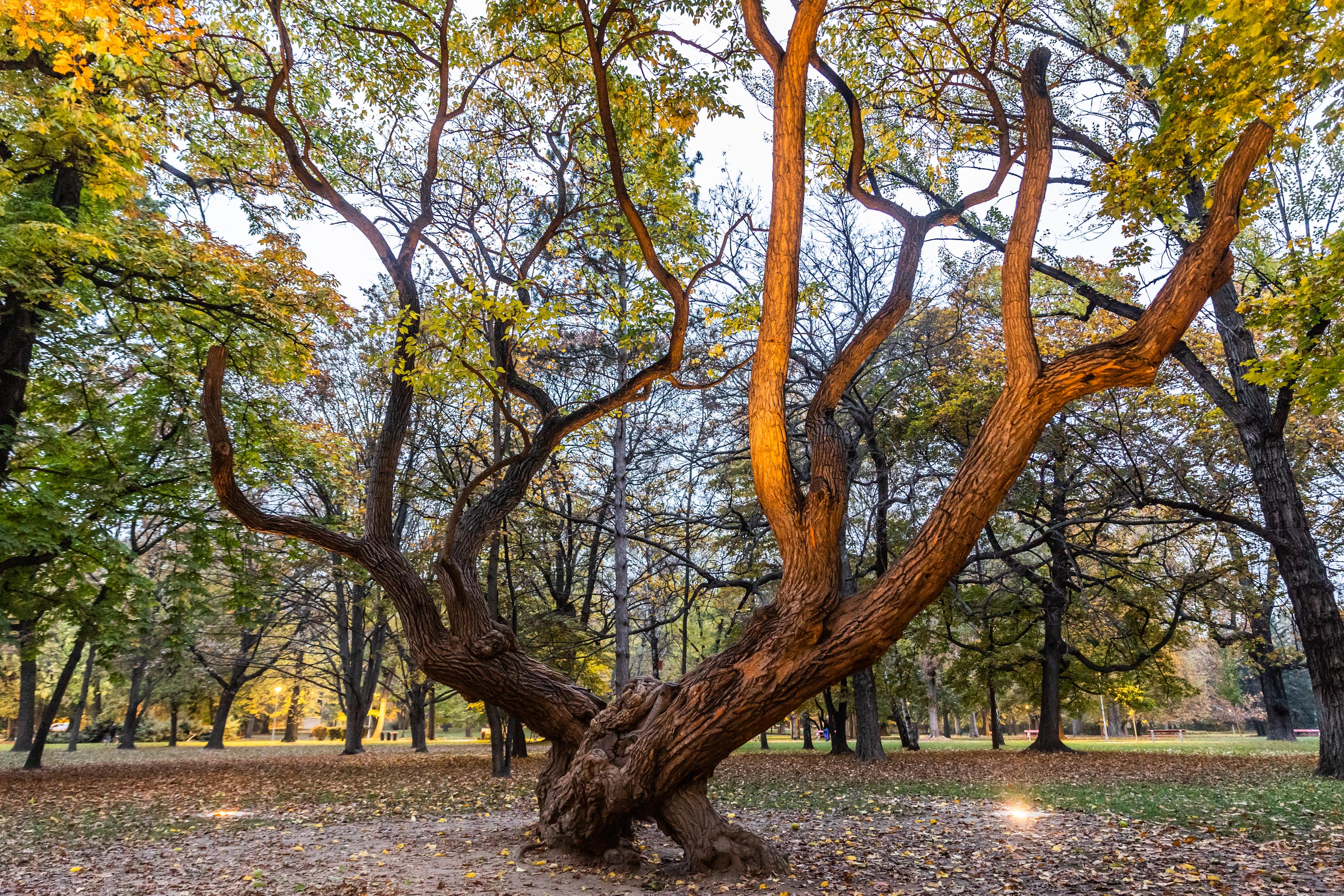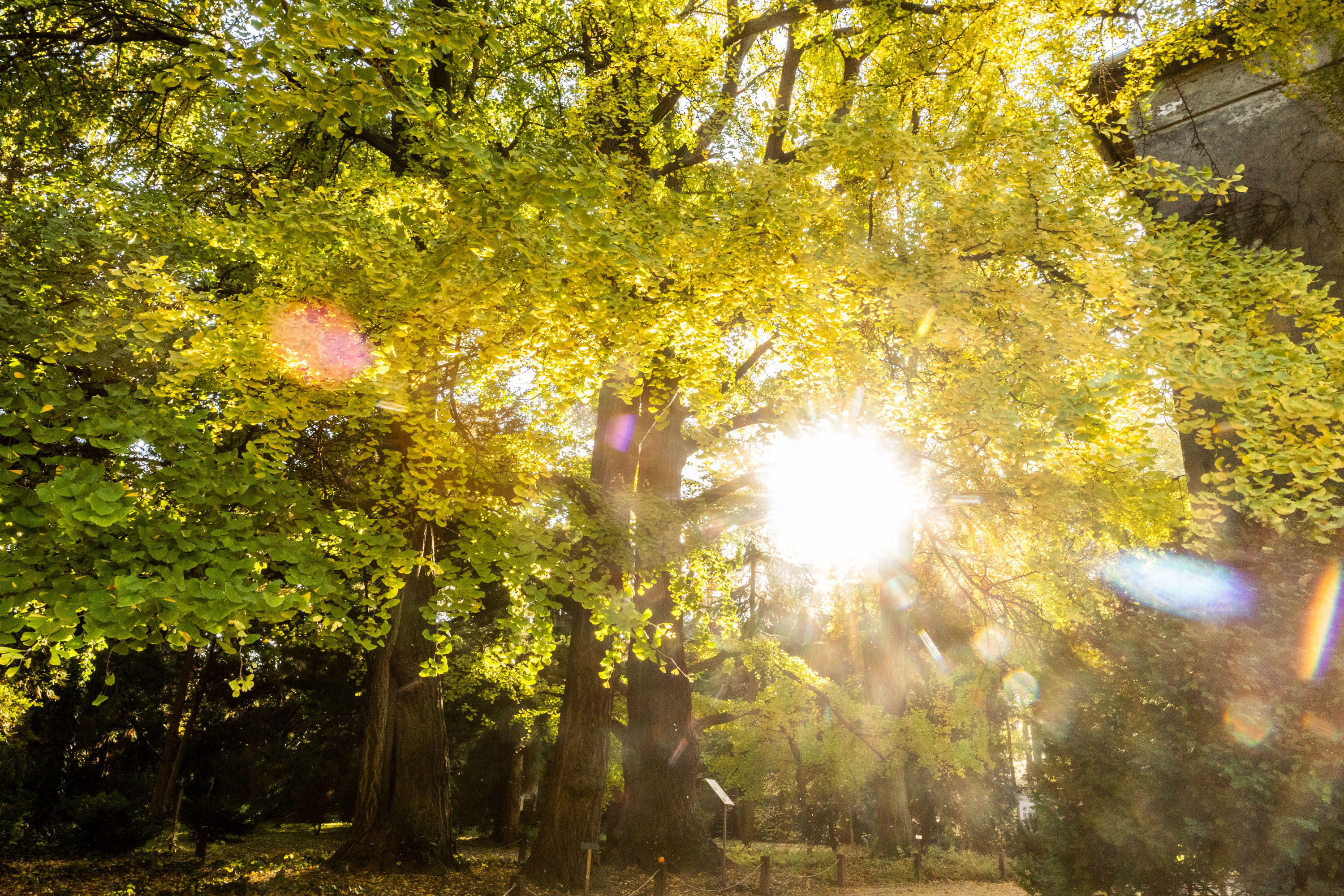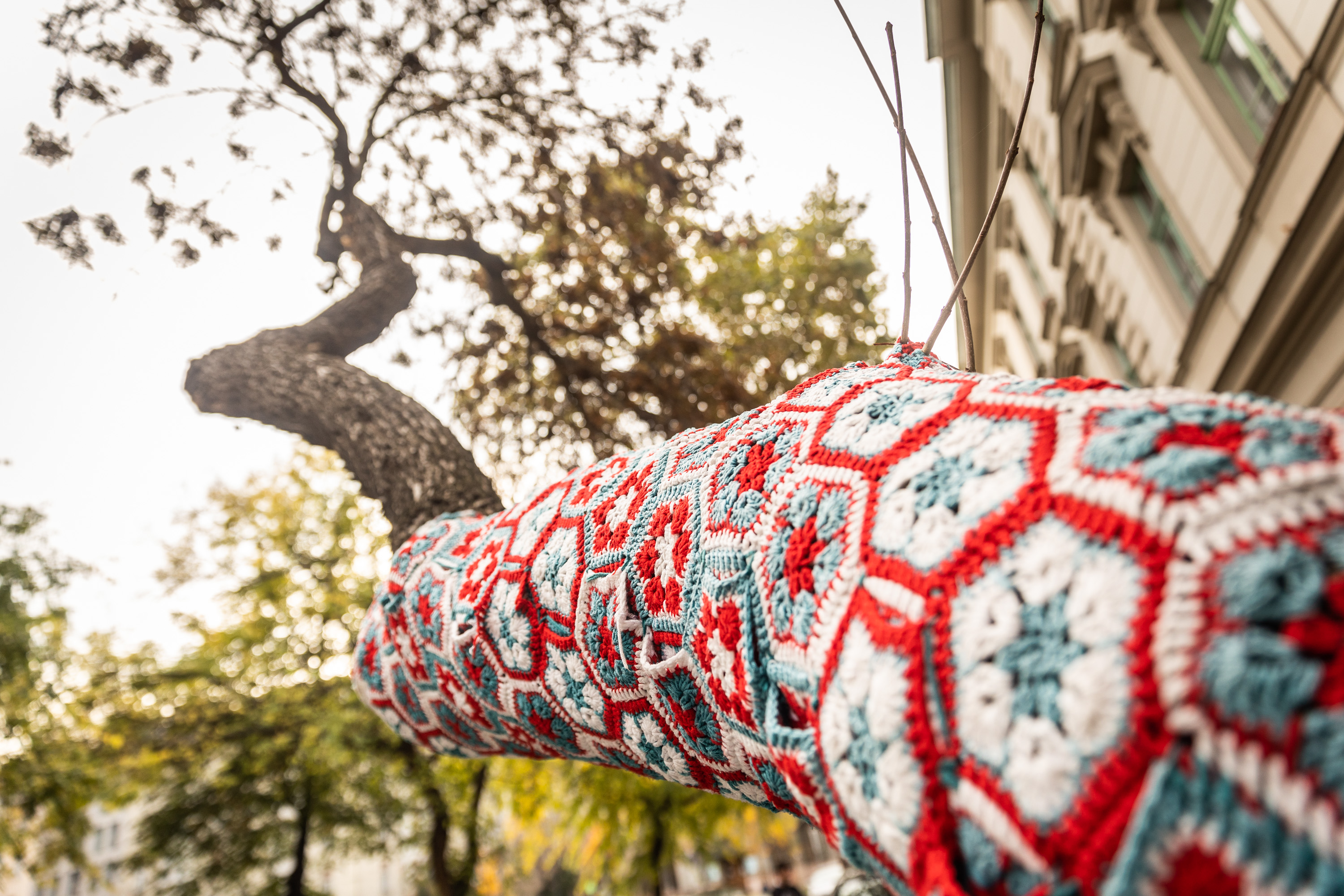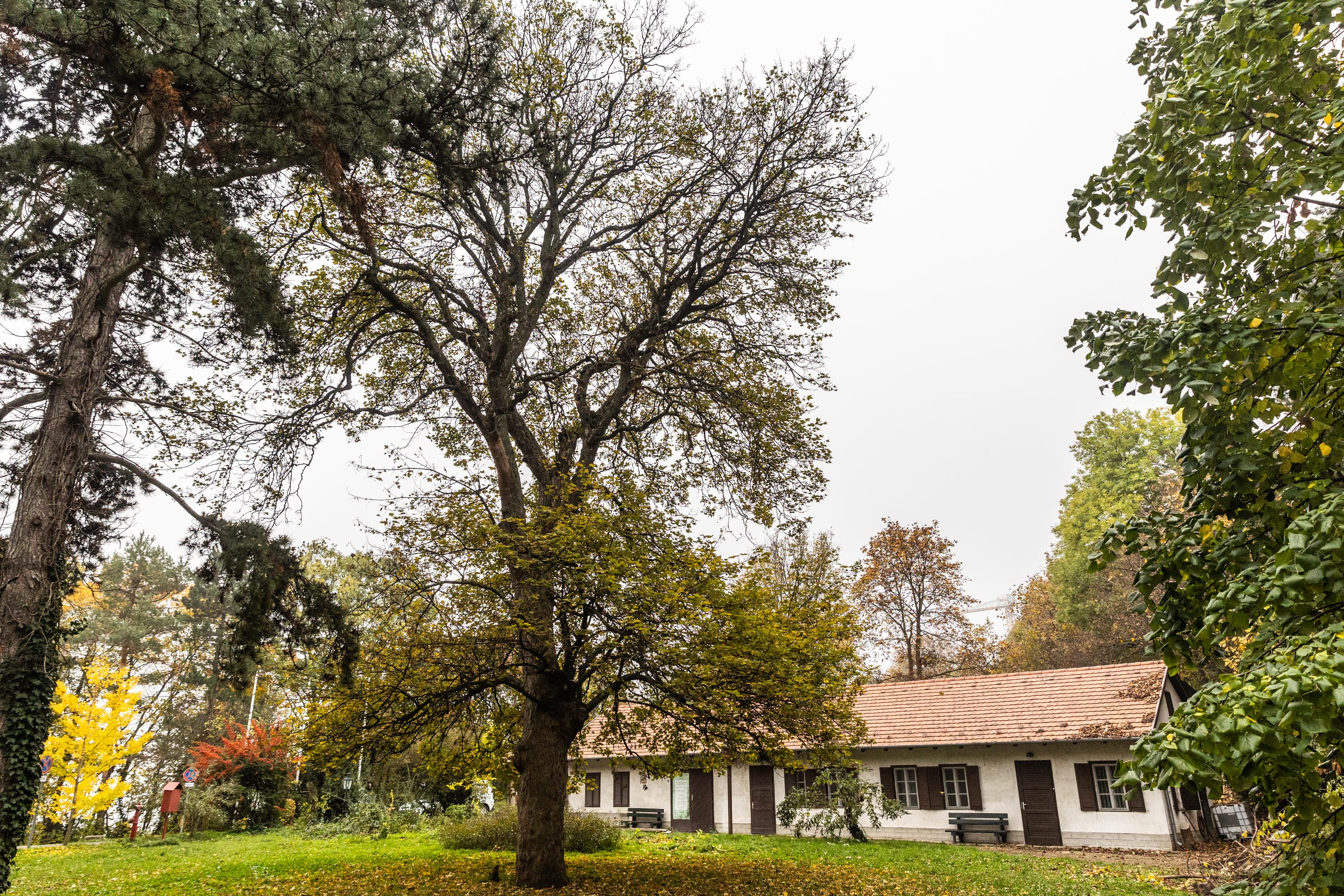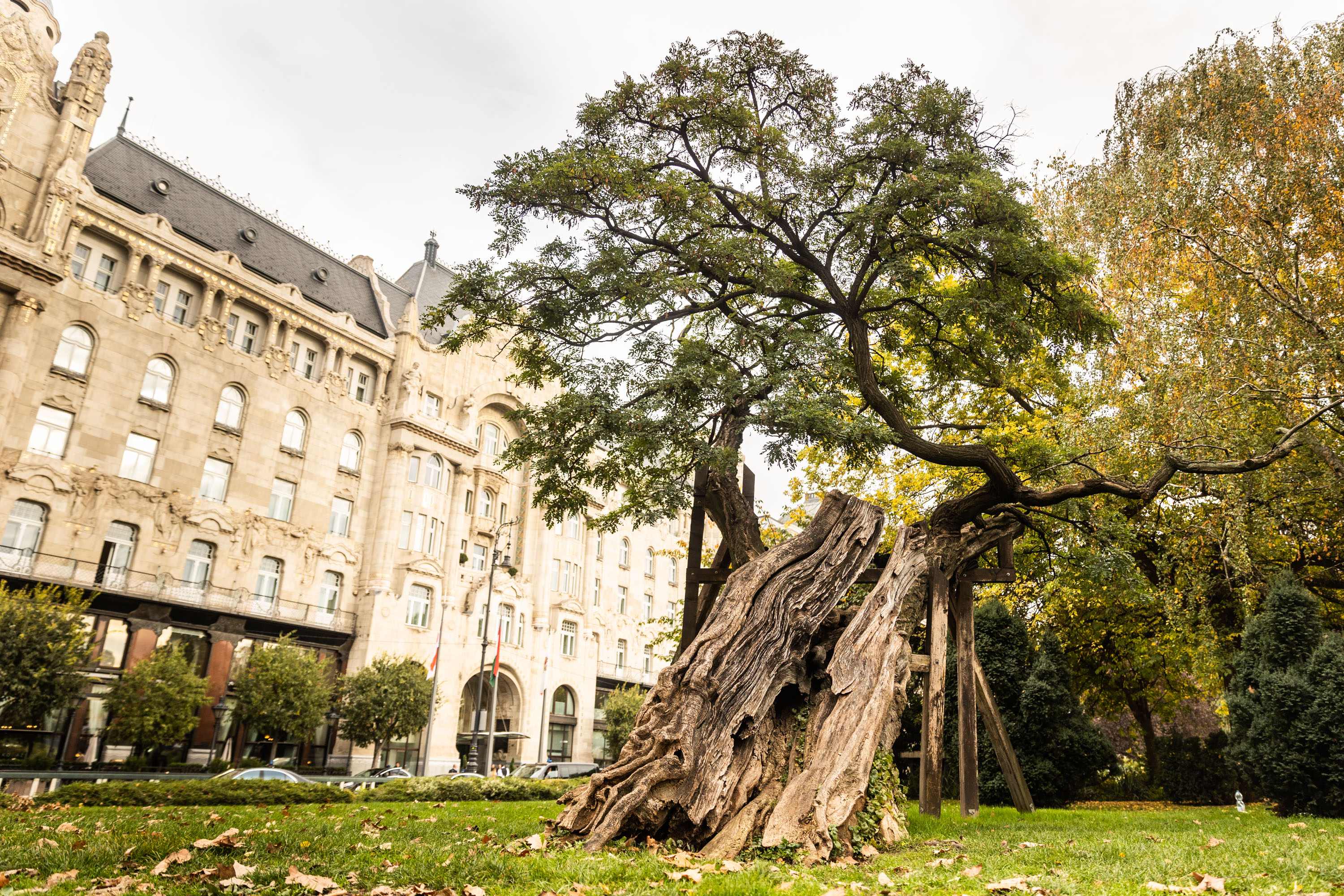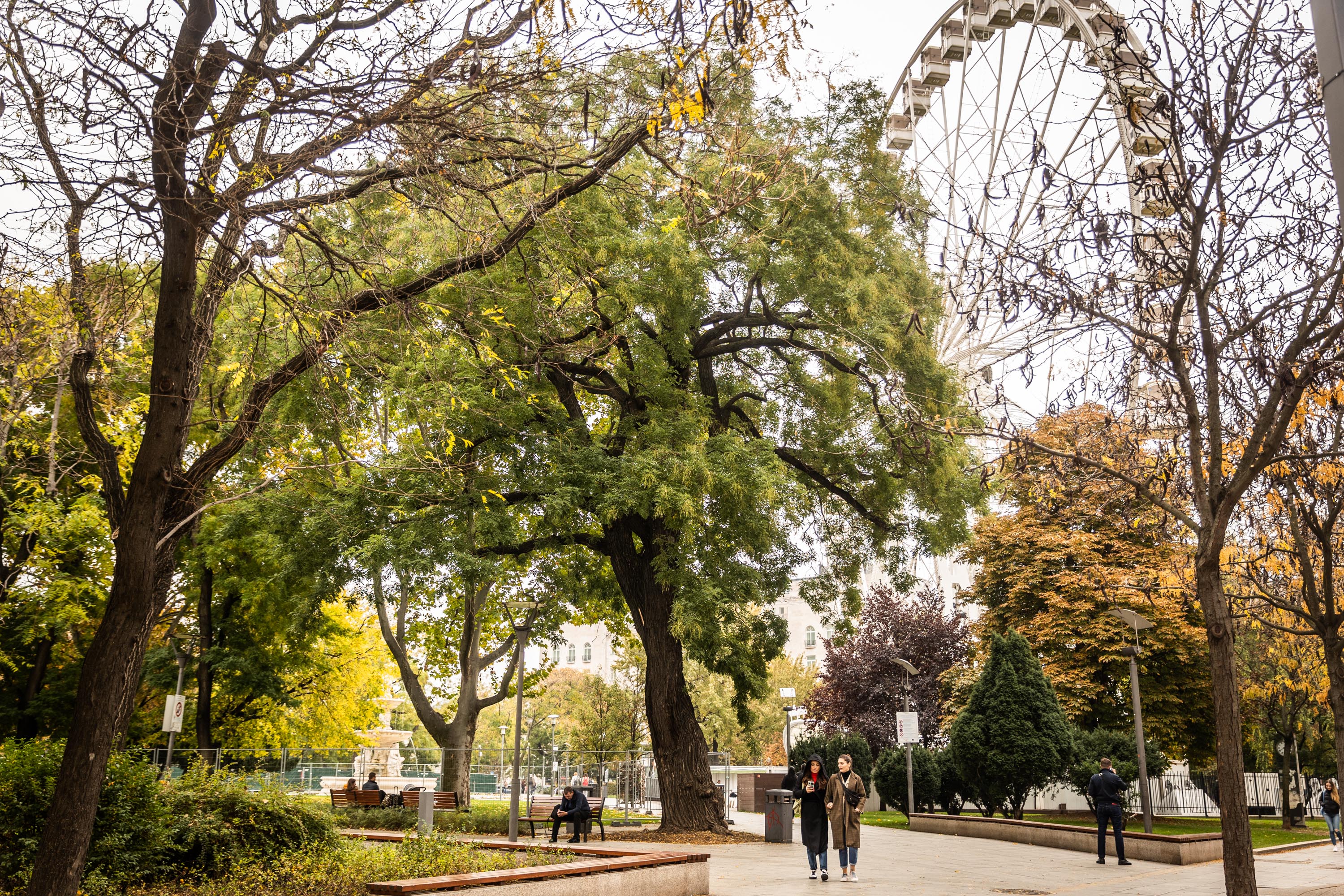Table of Contents
- 1 / 9 - Ancient mulberry tree, Tabán
- 2 / 9 - “Seven Chieftains” plane trees, Margaret Island
- 3 / 9 - Palatine Joseph’s plane tree, Margaret Island
- 4 / 9 - Osage orange tree, Margaret Island
- 5 / 9 - Old maidenhair trees, ELTE Botanical Gardens
- 6 / 9 - Flowering ash, Bakáts Square
- 7 / 9 - Jókai’s maple, Jókai Garden
- 8 / 9 - Old Acacia, Széchenyi István Square
- 9 / 9 - Acacia, Erzsébet Square
1/9
Ancient mulberry tree, Tabán
Perhaps no district has changed as much over the centuries as Tabán. One of the few permanent features is the ancient mulberry tree. In a photo taken a hundred years ago, it peeps out from behind a fence, and although it now stands in a large grassy area next to the Kőműves Stairs, it looks the same. Some date its planting back to the Turkish period. Legend has it that the pagans hung a Hungarian lieutenant from its branches, but the tree buckled under the weight. The lieutenant's feet hit the ground, and he survived, but the trunk got bent. It is more likely that the old giant was a sapling during the reign of Maria Theresa and that its leaves were to feed silkworms, as the Empress was keen to establish this industry in our country. Unfortunately, the 250-year-old tree is no longer in the best shape and has undergone major restorations. To ensure that it can stay with us for as long as possible, everyone is advised against picking its tempting fruits, as this could cause damage to the plant.
2/9
“Seven Chieftains” plane trees, Margaret Island
In addition to his many good qualities, Archduke Joseph of Austria, Palatine of Hungary, was also said to have been a gifted hobby gardener. He often swapped his fancy dolman for work clothes and did the planting himself. His love of plants is reflected in several plane trees: he is believed to have planted the ancestor of the Seven Chieftains plane tree on Margaret Island, which stood in front of the Palatinus Bath. This tree was split in two in a flood when it was almost a sapling, then cut back. Later it produced seven branches and was christened the Tree of the Seven Brothers. Sadly, this giant perished in the 1930s, but several other plane trees were around back then. During the Second World War, the island's trees suffered considerable damage. Such as one of the giants near the former favourite of Palatine Joseph, which was destroyed in the battles and had to be cut back. Later, seven new branches have grown from the original trunk, showing that plane trees are not only beautiful but extremely tough too. They cling to life with all their might, allowing us to enjoy another seven-armed giant near the old one.
3/9
Palatine Joseph’s plane tree, Margaret Island
It is two hundred years old, with a trunk of 6.5 metres in circumference, foliage with a diameter of 50 metres, and a height of 40 metres. The ancient plane tree of Margaret Island is a truly magnificent matuzalem, probably planted in the time of Palatine Joseph. The tree, which is in good condition, is one of the most beautiful of its kind and is internationally renowned. It's a wonderful hybrid, with one ancestor from North America and the other from southern Europe. Let's take good care of it so that it lives as long as possible by the Water Tower, next to the ruins of the Dominican Convent.
4/9
Osage orange tree, Margaret Island
The former summer house of Palatine Joseph was an oasis of plants on the then-wild Margaret Island, which was only accessible by boat. One of the gems of this magnificent garden must have been the osage orange tree, named after an Indian tribe in its native North America. The tree is sensitive to frost when it's young, so it's a miracle that it survived the icy flood of 1838, which bent its trunk. Fortunately, after initial difficulties, the somewhat crooked giant was able to reach for the sky again. You can admire it on Margaret Island, in the meadow closest to Margaret Bridge.
5/9
Old maidenhair trees, ELTE Botanical Gardens
Ginkgo biloba, or maidenhair tree, is a wonderful plant. On the one hand, it has been around for 150-200 million years, long before man, and in its native Asia, its leaves and seeds are used for both medicinal purposes and as a delicacy. The three beautiful plants in ELTE Botanical Gardens are probably much older than the institution itself and may have been planted by the previous owner of the site, Antal Festetics. What is certain, however, is that they have some of the most beautiful bright yellow foliage in autumn. And the way the light shines through the uniquely shaped leaves is surely healing for the mind and the soul.
6/9
Flowering ash, Bakáts Square
The 45-year-old flowering ash tree, in front of 10-13 Bakáts Square, was chosen for its vitality and symbiosis with humans, rather than its beauty or age. Its tall, gnarled trunk extends over the road, so you have to watch out for it when driving. But once you learn that it has gained its crookedness in a struggle for light with the buildings and plants around it, you'll see it's a true survivor. Because of its strange shape, it was considered for a cut-out several times, but its vitality and health ensured its survival. So instead of a saw, it got a knitted sweater for the part of its trunk that can be a problem for traffic. We wish Budapest's only tree protected by granny's crocheted sweater good health and many happy years!
7/9
Jókai’s maple, Jókai Garden
Svábhegy is paradise on Earth for old and protected trees. One of the most beautiful of these is the maple tree in the Jókai Garden, currently closed for renovation, probably planted by the Hungarian writer himself, who, like other wealthy property owners in the area, was a fan of the garden. Maurus Jókai bought it from the profits of A Hungarian Nabob and Zoltán Kárpáthy, and he and his wife, Róza Laborfalvi, created wonders in the former mining area. The garden, most of its territory planted with crops, featured vines, fruit trees, and roses. Although many of the plants are now gone, it preserves the atmosphere of the past, and some of the larger trees, including the maple near the administrative building, are a tribute to the writer's hard work.
8/9
Old Acacia, Széchenyi István Square
Rumour had it that this tree witnessed the construction of the MTA building and the Chain Bridge. But this is hyperbolic; photos reveal that the old acacia tree on Széchenyi Square, between Gresham Palace and the Chain Bridge, is only 120 years old. It stood unsupported until the 1970s, but in the 1980s, its upper branch dried out and has been gradually dropping ever since. Thanks to the Főkert horticultural company of Budapest, it can now look forward to the coming years with professional support in two places.
9/9
Acacia, Erzsébet Square
The acacia tree on the busy Erzsébet Square is often almost unnoticed, with so much going on underneath, even though it has been cooling the road to József Attila Street for 150 years. The giant stands in the fine company of other magnificent old trees overlooking the square, whose history it has steadfastly accompanied. Meaning the first German market and theatre, the visit of Empress Sissi and Emperor Franz Joseph, and the construction of the busy bus station. Today, it humbly bears the noise from the Akvárium Klub. Don't forget to admire its large, healthy foliage if you pass by.
